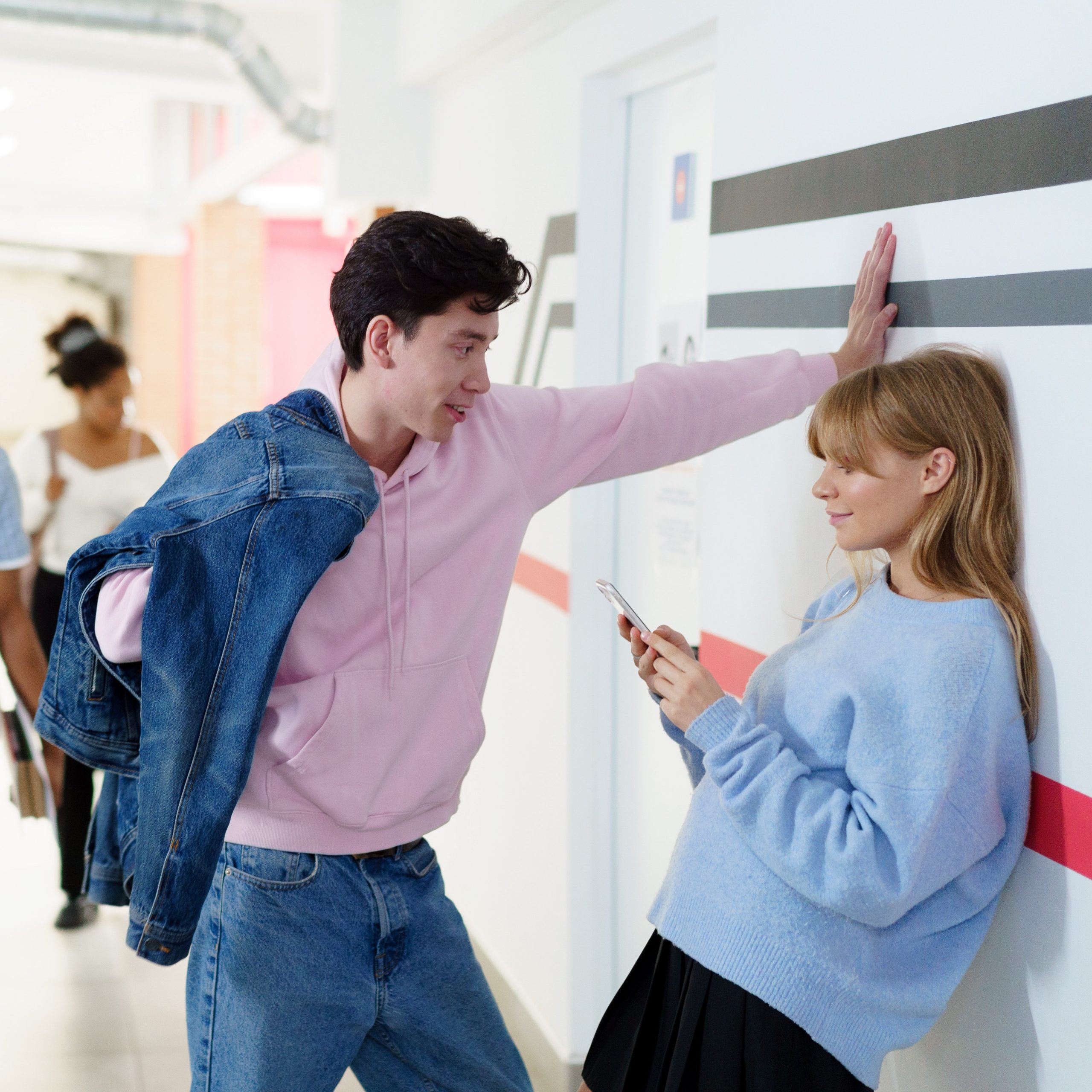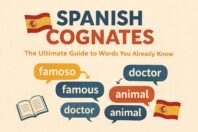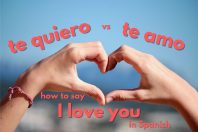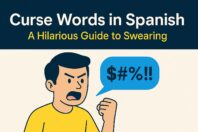The Most Common Compliments in Spanish

Get our free email course, Shortcut to Conversational.
Have conversations faster, understand people when they speak fast, and other tested tips to learn faster.
More infoWhenever you’re in a Spanish speaking country, knowing how to make compliments in Spanish will be an easy way for you to make new friends. In Latin America we normally use compliments with friends, family, and even with strangers!
Mastering some of the basic compliments in the Spanish language is a good opportunity to express sincere respect and appreciation to the people around us. It is an important aspect of learning the language since it allows us to cheer up those around us and help us to build strong friendships, family bonds, or work relationships.
If you’ve been wondering, how do you compliment someone in Spanish?, you’ve come to the right place. In this post, we’ll cover some of the most common Spanish compliments that can come in handy in any kind of situation. These compliments in Spanish will be explained in context so that, by the end of the post, you’ll be capable of using them knowing when is the right time to use each one. We even end the post with a quiz video for you to practice your Spanish small talk phrases, along with some exercises to practice each Spanish compliment.
Let’s get right into it!
Qué [Noun] Más [Adjective]
What a [adjective] [noun]
Whenever we want to praise or compliment someone’s clothes, belongings, or objects we use this formula.
- ¡Qué casa más bonita! – What a beautiful home!
- ¡Qué falda más bonita! – What a nice skirt!
- ¡Qué reloj más elegante! – What an elegant watch!
- ¡Qué cachorro más adorable! – What a lovely puppy!
- ¡Qué día más hermoso! – What a beautiful day!
There are two variants to this expression in which we replace qué by vaya or más by tan. The meaning and emphasis remain the same.
- ¡Qué chico tan guapo! – What a handsome boy!
- ¡Vaya cena tan deliciosa! – What a delicious dinner!
- ¡Qué vestido tan lindo! – What a nice dress!
To wrap up this compliment and its different forms, here’s a list of the options whether using qué vs vaya or más vs tan. Remember these all have the same meaning and emphasis, so switching the words just enables us to have some variation when we’re giving our compliments in Spanish.
- Qué [noun] más [adjective]
- Vaya [noun] más [adjective]
- Qué [noun] tan [adjective]
- Vaya [noun] tan [adjective]
Se Te Da Muy Bien [Activity]
You are really good at [activity]
The second compliment that’s very common among Spanish speakers allows us to tell someone that you think they’re very good at some activity. We form this expression by saying Se te da muy bien and then finishing up the sentence by mentioning the name of the activity.
Se te da muy bien is translated as You are really good at. So with this formula, you just need to fill in the blank at the end of your compliment to match your desired context! This type of compliment is used to praise someone’s capabilities, so it can just as easily be used with friends, family members, coworkers, or strangers.
- ¡Se te da muy bien la escritura! – You’re really good at writing!
- ¡Se te da muy bien la cocina! – You’re really good at cooking!
- ¡Se te da muy bien el arte! – You’re really good at art!
Spanish speakers also use another version of this expression by adding Qué bien at the beginning to replace muy bien at the end. The meaning doesn’t really change, though it does allow us to have a bit more of variety with our Spanish compliments. Its English translation still is You’re really good at or You’re so good at.
- ¡Qué bien se te da la escritura! – You’re really good at writing!
- ¡Qué bien se te da la cocina! – You’re really good at cooking!
- ¡Qué bien se te da el arte! – You’re really good at art!
To sum up this Spanish compliment for telling people they’re good at a certain activity, here are the two versions we can choose between:
- Se te da muy bien [activity]
- Qué bien se te da [activity]
To be able to compliment a wide variety of people on their favorite activities, you first need to know how to say the actual activities themselves! Be sure to read our post on Words for Hobbies in Spanish to learn a bunch of activities to use when using these compliments in Spanish.
Estás [Adjective]
You look [adjective]
This next compliment in Spanish is used to praise someone for his or her appearance. The simple structure Estás [adjective] is created by including a description of someone’s appearance. This compliment in Spanish is very common when you’re flirting with someone or you are in a romantic relationship.
- Estás hermosa. – You look beautiful.
- Estás muy elegante. – You look really stylish.
- Estás deslumbrante. – You look stunning.
Note that estás is the conjugation of the verb estar for tú, which is the singular familiar form of you in Spanish. To compliment the looks of a group of people with this expression you’ll need to use the form [ustedes] están, whereas when addressing someone formally you’ll want to use [usted] está. Remember also to match the form of the adjective to the gender and number of whoever you’re complimenting.
- Buenos días señora, está muy bonita esta mañana. – Good morning madam, you look very pretty this morning.
- Hola chicas, ¡están fabulosas esta noche! – Hey ladies, you look fabulous tonight!
For some inspiration in using these particular compliments in Spanish, and to help elaborate on your interactions, you may want to check out our other post on Basic Spanish Vocabulary for Physical Descriptions.
¡Cómo Me Gusta Tu [Noun]!
I really like your [noun]!
This structure is normally used when we want to compliment someone’s things, whether their clothes or accessories or other belongings. In English you say I really like your…, and it’s a good way of starting a conversation or simply praising someone.
- ¡Cómo me gusta tu camisa! – I really like your shirt!
- ¡Cómo me gusta tu carro! – I really like your car!
- ¡Cómo me gusta tu casa! – I really like your house!
If it’s someone’s clothing that you’d like to praise with this compliment in Spanish, then we recommend checking out our dedicated post introducing Essential Vocabulary for Talking about Clothing in Spanish.
¡Buen Trabajo!
Good job!, Nice work!
Our last Spanish compliment of today’s post is ¡Buen trabajo! This straightforward compliment can translate to Good job! or Nice work! in English. This compliment in Spanish can be used in so many contexts, whether at work, at school, or when interacting with kids. This simple compliment is always welcome, as it’s used to acknowledge someone’s effort or work.
- ¡Qué poema tan hermoso! ¡Buen trabajo! – What a beautiful poem! Good job!
- ¡Qué trabajo más completo! ¡Buen trabajo! – What a thorough job! Nice work!
Conclusion
So far so good! Now that you’ve learned five basic but effective compliments in Spanish, don’t be afraid to put those formulas to work. Compliments cost us nothing, allowing us to have smooth and kind interactions, make friends, and even break the ice to ask someone out for a date!
We’ll leave you with this quiz video to help you practice what you’ve learned here. In addition to covering our new Spanish compliments in the second half, the video starts with some other useful phrases for Spanish small talk that we introduce in our related post on different ways to ask “how are you?” in Spanish. Of if you’d rather just skip ahead, try the written exercises that follow, so you can practice using each of the compliments in Spanish that we’ve covered here. ¡Buen trabajo! – Nice job!
Exercises
Complete the sentences to practice using the Spanish compliments you’ve just learned. The answers and translations are below.
1. ¡ ______ muy bonita!
2. ¡______ muy bien la escultura!
3. ¡______ dibujo _____ bello, Tomás! ¡Buen ______!
4. ¡ _____ me _____ tu abrigo, Mary!
5. ¡ ______ torta tan deliciosa!
6. ¡ _____ canción ______ preciosa!
Answers
1. ¡Estás muy bonita! – You look so pretty!
2. ¡Se te da muy bien la escultura! – You’re so good at sculpture!
3. ¡Qué dibujo más/tan bello, Tomás! ¡Buen trabajo! – What a beautiful drawing, Tomás. Good job!
4. ¡Cómo me gusta tu abrigo, Mary! – I really like your coat, Mary!
5. ¡Qué torta tan deliciosa! – What a delicious cake!
6. ¡Qué canción tan/más preciosa! – What a gorgeous song!



